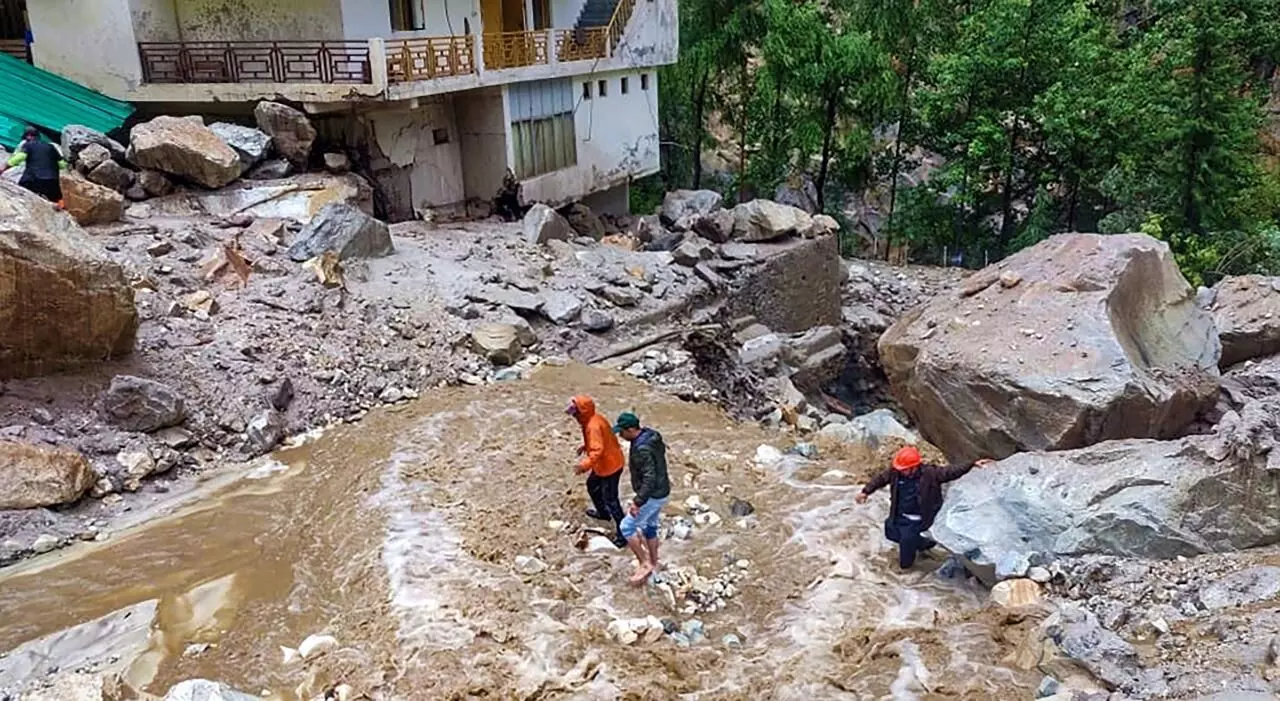Talking Shop: Shameless. Callous. Impotent.
A year after the slaughter, ruckus rules the hillsides again, as if man has taken a vow to decimate all that is beauteous. It may be apt to call it ‘death by foetus’

“(It seems) man has lost
the capacity to foresee
and forestall. He will end
up destroying the Earth.”
— Albert Schweitzer
Do a Delhi-Manali-Delhi weekend trip behind the wheel through Friday-Sunday and you can be assured of one thing… Back in mid-monsoon Delhi on a work-day, Monday is going to be bleary and depressing. But it is the corollary that keeps me going – before the gloomy Monday will come a vibrant Saturday and a blissful Sunday. Or so I thought.
As it turned out, all that the weekend reminded me of was Schweitzer and his words, which are turning out to be alarmingly true. Short of taking a hammer and sickle, or sticks of dynamite and TNT if one is particularly focussed and determined, man is doing everything he can to pulverize nature.
Back to the trip. Leaving on Friday, we made mincemeat of the highways, the turbo-charged engine yippying in exultation as cool climes hit the aluminium alloy block for the first time. Adaptive cruise control and ADAS did what they are built for and we were at Kullu in the wee hours, the only eyesore along the 500-km dash being mounds of garbage and festering fields of harvested wheat and dhaan. Gazing at the looming mountains that energized me even in those early hours, I exclaimed: “I am coming to you.”
I couldn’t have been more wrong. Halfway on the 40-odd-km stretch between the twin hill cities, traffic screeched to a halt, for the state highway had given way to the deathly dash of the mighty Beas river. As I got out, I moaned. Exactly 13 months back, at precisely the same spot, the road had been washed away. Asking gathered locals why our Mother (Nature) was angry with this one particular stretch, I was told: “Marammat kar di, par musibat ki jad ko toh suljhaya hi nahin. (They made repairs, but never got to the root of the problem).”
Root of the problem
Dange. This small word in ‘Mandiyali’ (spoken in Mandi) depicts a concrete retaining wall that stretches someway beyond the banks and into the river to prevent road washouts such as the one we were stuck on. That is all that was required. Dange. In my mind, I recalled the incessant rains that had engulfed Himachal Pradesh and its higher regions on July 8, 2023, historic in the power of devastation and loss of life they wreaked.
Entire river-fronts and mountainsides were washed away in Manali, Shimla, Manikaran, Bilaspur, Jibhi, Sainj, Rampur and more places. Thousands were rendered homeless and many more lost their lives, or were never found after floods washed away everything that lay along their path. Similar destruction was reported in Uttarakhand, Jammu & Kashmir, the North-East and other hilly regions in India.
Dange. That was all that was required at most places in these states to repulse the angry waters. But a year on, they were not just conspicuous by their absence, they forced me to wonder how callous and uncaring the authorities were. Why weren’t they built, I wondered. Some quick research and I knew why.
Around Rs 10,000 crore was sought from the Centre by the Himachal Pradesh Government for erecting the water-diverting structures. Lo and behold, the funds were disbursed too, and the dange constructed. A minor hiccup was they were being built now, AFTER damage and death happened again, ‘at the same spot’, a year later. Hundreds of roadsides told similar stories. No dange. And you have to hear this – in this year-long hiatus of ‘no dange’, buildings and government offices were constructed; the only problem was they were built so close to the river waters that they too had been washed away.
After the slaughter
Thus, a year after the slaughter, ruckus rules the hillsides again, almost as if a vow has been taken to decimate all that is beauteous. It may be apt to call it ‘death by foetus’. We seem to be hell-bent on destroying the beauty and magnificence we grew up with, and that which we show our children with pride in their growing-up years. What then will our children show to their own? Let’s not even try and go forward another generation; there’s no point.
Something else is also happening, a year later. So short is public memory that just 12 months after fleeing the hill stations in panic, scared for their very lives, tourists are back. Let’s not talk of traffic snarls, teeming crowds and no hotels or public facilities. Let’s talk of ‘mountain state’ governments. A year back, they cried and flailed their arms over the landing of the masses and the resultant havoc on available resources. Last month, they welcomed those same masses with open arms, shovelling in the bushel-loads of money that came in tow. Today, they are crying again over runaway rivers and tragedy. Sigh.
The problem is that no one in authority really cares. The problem is the land and sand mafia, hoteliers and restaurateurs, travel agents and tour operators, real estate tycoons and their goons, car and bike rental firms, even the common man who turns entrepreneur for a bit in the ‘season’. No one really cares.
Everyone is out to make a quick buck, and the future be damned. No one in a position of authority spoke of a ‘ration system’ to limit the number of people descending on any one destination or hill station; no one spoke of limited natural resources like water (or breathing space) and their paucity; and certainly, no one spoke on why once-mighty oaks are now tumbling like twigs and acorns. All that people spoke of, when cornered, was loss of livelihoods and earnings.
I differ – let jobs be lost, let some go without livelihoods, let some go back to their villages to survive; for, in their greed, they are collectively working as if on a mission to bring down everything short of Everest. Perhaps they will get there too; after all, they have already begun rearing a new animal species called ‘Everest Tourism’ in the land of the Yeti.
Kalidasa would be tickled
We are cutting off our own legs from under us with remarkable dexterity, so nonchalantly that even Kalidasa would be tickled pink. Moral: Next time you want to visit Manali or Shimla, thank the heavens for the Atal Tunnel, for Manalis and Shimlas would soon be found only on the other side, for the ‘hill stations’ of yore are now beyond their prime, all but gone.
The all-weather Atal Tunnel is the gateway to the Spiti Valley 12 months of the year, India’s apologetic answer for turning once-bucolic Himachal Pradesh into a cacophony of vehicles, obnoxious holidayers and total chaos. This tunnel has opened up Himachal’s new Manalis and Shimlas, the latest embodiments of natural, virgin mountains and pristine hillsides. Don’t worry, man will get them to kneel too.
Previous throne-hogging hill stations have been brought to naught, having faced the wrath of man and lost. This paves the way for a pre-ordained battle – pre-ordained because when it comes to man, nature seems impotent even when engorged. It is when its slumber is shaken that mountains move, hillsides come down with just a Kumbhakarna yawn, and conch shells are sounded for the next faceoff. The rape of the mountains begins all over again.
We have forgotten the words used by Rachel Carson: “But man is part of nature, and his war against nature is inevitably a war against himself.” We seem to be hell-bent on destroying the beauty and magnificence that we grew up with, that which we show our children with pride. Think: What will our children show to their own?
The writer is a veteran journalist and communications specialist. He can be reached on [email protected]. Views expressed are personal



